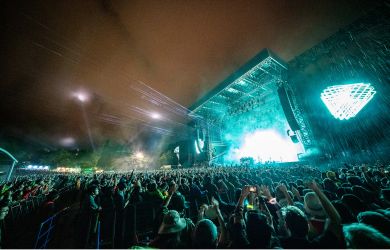
Originally published on metropolis.co.jp on August 2012

If you exit Tokyo Station on the Marunouchi side there’s a slight chance that you might think you’ve wandered into a time warp. First, there is the Tokyo Station Hotel, built in the English neo-baroque style that was in vogue when it opened in 1914. Next, there is the art-deco-influenced façade of the Tokyo Central Post Office Building, dating from the 1930s, and now incorporated into a new 38-storey tower. Then, there is the Mitsubishi Ichigokan, a carbon copy of a prestigious late Victorian office building that formerly occupied the site, but which was built and opened only two years ago as the Mitsubishi Ichigokan Museum.
This preserved, restored and rebuilt piece of retro architecture helps give the area some of the old atmosphere that once earned it the nickname “Number One London.” It is also the perfect setting for an exhibition of the work of Edward Burne-Jones, one of the great painters of what was the greatest artistic movement of the 19th century, the Pre-Raphaelite Brotherhood. Yes—the Impressionists are overrated!
Unlike the Impressionists, who were obsessed with the visible and the mundane, the Pre-Raphaelites focused on the spiritual, the emotional, the mythic, and the symbolic, creating works of art that can still move us. The Impressionists by contrast have mainly ended up on biscuit tins. While pleasant to look at, their nice-looking lily ponds and fuzzy haystacks do little to uplift the human soul.
The spirituality of the Pre-Raphaelite movement is signaled by its name. Rather than the works of the high Renaissance, like those of da Vinci, Michelangelo, or Raphael, which reflected the “mechanistic” application of rules of perspective, the movement looked back to the more pietistic painters of the early Renaissance for inspiration.

The forthright Christian message is most obvious in The Merciful Knight (1863), which shows a statue of Christ coming to life to bless an armored warrior who has spared an opponent. This theme of statues coming to life was clearly dear to Burne-Jones’s heart. As you wind your way through the intricate passages that link the intimate galleries of this museum, you’ll come upon various series of works, including the enchanting Pygmalion (1878), based on the classical Greek myth of the sculptor who falls in love with a statue of a beautiful woman that is finally brought to life by the god Apollo.
Even more impressive are a pair of gouache paintings depicting the triumphs of the Greek hero Perseus. The Death of the Medusa (1882) and the The Doom Fulfilled (1882) might strike you as rather baffling compositions at first, but the initial confusion helps to give these works an energy entirely keeping with the drama they depict.
This is a richly rewarding exhibition that covers all of Burne-Jones’ career, including his close association and artistic collaboration with William Morris, the medievalist and design genius behind the English Arts and Crafts Movement. In this setting, with its strong period feel, we can almost imagine encountering these great men as well as their artworks.
Mitsubishi Ichigokan Museum, until Aug 19 (listing).





